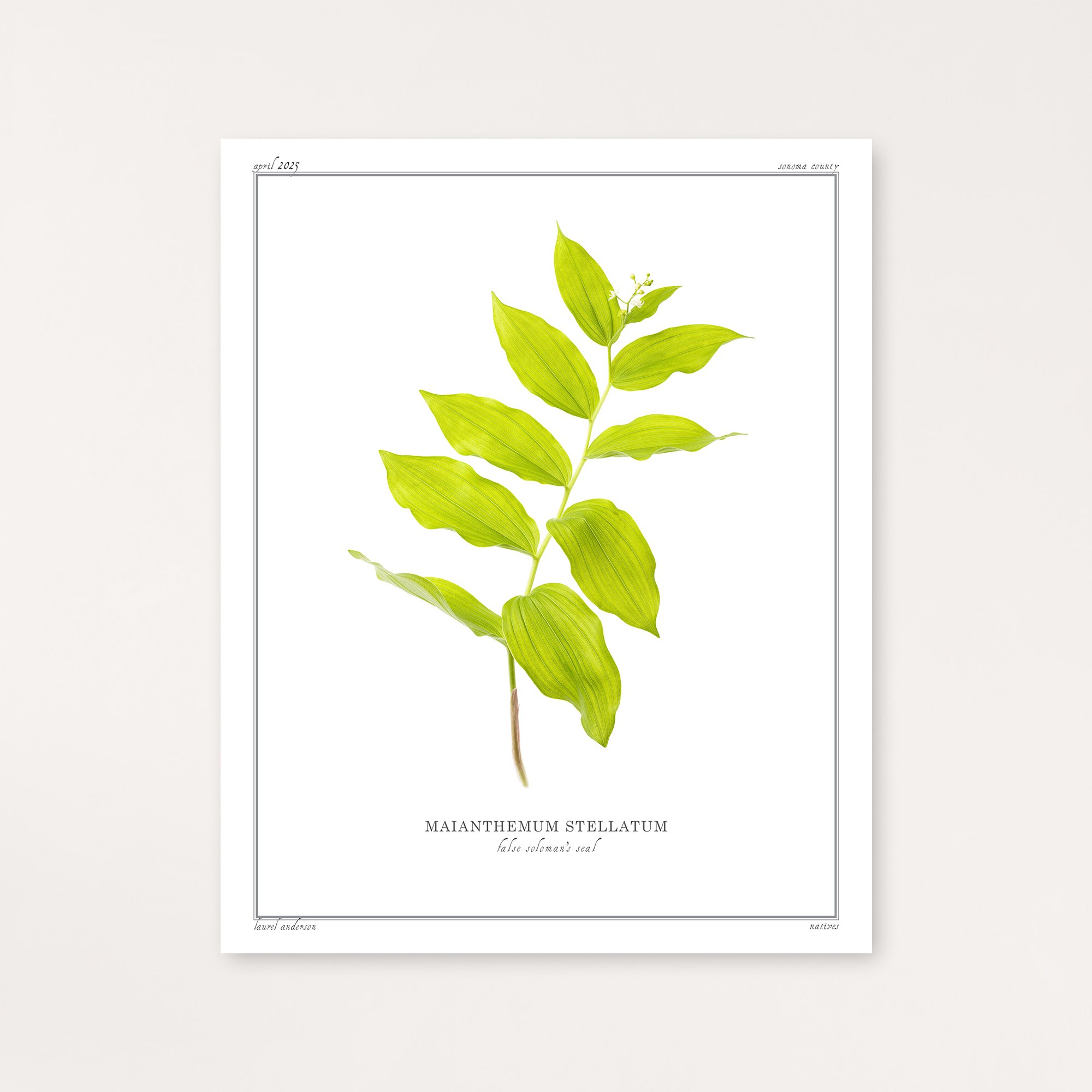 Image 1 of 2
Image 1 of 2

 Image 2 of 2
Image 2 of 2



False Soloman's Seal
False Soloman’s Seal, Maianthemum stellatum, is a dainty woodland perennial native across most of North America.
Many indigenous peoples harvested the distinctive berries as a traditional food source. The plant played an important medicinal role, with healers preparing decoctions from the leaves to treat rheumatism and provide relief from colds, while a compound preparation from the roots addressed various internal pains.
In California, the springtime flowers attract native California bees as vital pollinators, while the plant's distinctive berries—green with maroon stripes ripening to bright red—provide important food for California songbirds, grouse, elk, and bears. Its extensive rhizome system helps prevent soil erosion on forest floors and streambanks throughout the state.
Each print is made by the artist using archival quality pigment ink on Moab's Entrada Rag Bright 300 paper.
False Soloman’s Seal, Maianthemum stellatum, is a dainty woodland perennial native across most of North America.
Many indigenous peoples harvested the distinctive berries as a traditional food source. The plant played an important medicinal role, with healers preparing decoctions from the leaves to treat rheumatism and provide relief from colds, while a compound preparation from the roots addressed various internal pains.
In California, the springtime flowers attract native California bees as vital pollinators, while the plant's distinctive berries—green with maroon stripes ripening to bright red—provide important food for California songbirds, grouse, elk, and bears. Its extensive rhizome system helps prevent soil erosion on forest floors and streambanks throughout the state.
Each print is made by the artist using archival quality pigment ink on Moab's Entrada Rag Bright 300 paper.










